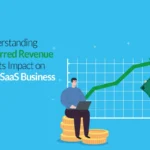
Mastering Revenue Operations SaaS: A Strategic Guide
In today’s meteoric SaaS landscape, there is a whirlwind of business growth. If not handled right, this growth can lead to an operational mess. This is where the revenue operations (RevOps) SaaS enters the chat. RevOps makes sure that your revenue processes are streamlined. It unites multiple facets of your company, such as sales, marketing, finance and customer success to fuel the engine of your company’s advancement.
But what exactly is revenue operations SaaS, and why is it pivotal for expanding SaaS businesses?
In this blog, we will dissect the components of a successful RevOps strategy, and explore the key stages involved in it. Put this strategy to use, and come up with actionable decisions to skyrocket your revenue!
What is Revenue Operations SaaS
Revenue Operations SaaS is an integrative business function designed to maximize your revenue potential. RevOps ensures that your company’s entire infrastructure is aligned to meet your revenue goals. The aim of revenue operations is the perfect orientation of all your revenue-driving functions, across the entire customer lifecycle, for excellent customer experience.
Think of your company as a human body. If any one part of the body malfunctions, the entire body suffers in the aftermath. It reduces the body’s overall productivity considerably. Similarly, if any one department of your company misaligns with the rest, it may become more of a liability than an asset. Revenue operations SaaS prevents that from happening.
RevOps does not refer to a single department, rather to an integrated system of processes. RevOps can be broken down into four main areas:
1. Operations: This area focuses on supervising the daily processes, and strategizing for the future.
2. Enablement: This function takes care of the onboarding, training and development of each department’s team.
3. Insights: It covers the collection of data and its analysis from sales and customer behaviors. This aspect helps the professionals to make informed decisions.
4. Tools: This aspect deals with the management of the revenue operations software, technical integrations and data handling.
RevOps is preferred by SaaS businesses, especially those which are subscription-based. That is because the revenue operations SaaS approach matches their need for predictable revenue, such as MRR (monthly recurring revenue), or ARR (annual recurring revenue). It also helps in boosting customer retention, and offers access to a wealth of quantifiable SaaS metrics.
The Key Metrics RevOps Covers
These are some of the common metrics that the revenue operations SaaS is accountable for:
- MRR (Monthly Recurring Revenue): The revenue a business looks forward to every month via its active subscriptions.
- ARR (Annual Recurring Revenue): The total amount of recurring revenue expected to be earned in a year.
- NRR (Net Revenue Retention): The percentage of recurring revenue retained from the existing customers, accounting for upgrades, downgrades, or churn.
- LTV (Lifetime Value): The revenue a company expects to collect from its customer over an entire customer lifetime.
- CAC (Customer Acquisition Cost): The total cost a company spends in order to acquire a customer, including the marketing and sales costs.
- CAC Payback: The number of months needed to recover the cost spent on acquiring a customer, through the revenue generated by that customer.
- LTV:CAC: The ratio between the customer lifetime value and the customer acquisition cost. The higher this ratio, the higher the profitability a business has achieved through its customer.
Major Players in Revenue Operations SaaS
RevOps refers to the alignment of various sectors of a business. What sectors are these? These are the marketing, sales, and the customer success teams, as well as the revenue operations manager.
1. The Marketing Department
In SaaS operations, the marketing team plays an important role to acquire and engage customers via marketing strategies. The game does not end at the point where the customer is acquired. It extends beyond that. It is the marketing team’s responsibility to ensure that the customer remains loyal to the company. The marketing efforts must be honest and accurate in order to foster trust among the customers.
Moreover, the team must leverage personalization. Strategies such as personalized email campaigns, and targeted content marketing are effective in customer engagement and retention.
The collaboration between the marketing, sales, and customer success departments is crucial. It ensures that the marketing team is coming out with effective plans that line up with the company’s overall revenue vision. Marketing strategies are informed by insights from the customer data analytics, to curate campaigns better targeted to the audience.
2. The Sales and Customer Success Departments
Revenue operations SaaS drives the cooperation between the sales and the customer success teams to keep them oriented to a common goal. The primary function of sales is to close the deals, and convert the leads into customers. The customer success crew takes it from there, and maintains customer relationships.
The customer success team has a hand behind successful sales as well. It involves itself in customer engagement prior to the sale finalization, leading to the deal getting closed. This proactive partnership ensures seamless transactions and cultivates trust between the company and the customers over time.
After the sale is completed, the customer success team takes charge and delivers value to the customer. Customer retention adds to successful revenue growth. And what is better than converting your customers into advocates of your company? The referrals made by the customers are a potential source of additional revenue.
3. The RevOps Manager
The revenue operations manager unites the SaaS operations teams together to meet the revenue objectives. The manager is the key behind developing effective monetization strategies from the shared insights of the other teams, and then aligning the teams toward these strategies.
Key Facets of Revenue Operations Strategy
To carry out an effective revenue operations strategy, it is important to consider the key elements which form this strategy:
1. Alignment
Importance: It prevents the SaaS operations from being entirely departmentalized, and siloed. The teams are united toward common long term goals, instead of focusing on only the short term ones.
2. Data and Analytics
Importance: Your company continuously gathers data through various departments. If the data becomes siloed, it goes to waste. But if the updated data, such as usage data, churn analytics, subscription renewals, etc. is shared across teams, they get a complete picture of the customer journey. It leads to the optimization of revenue improvement strategies.
3. Software Integrations
Importance: A company uses a number of software to facilitate its SaaS operations. The ability of these software to integrate with each other via an all-in-one platform like SubscriptionFlow determines the success of your revenue operations strategy.
4 Stages of Revenue Operations Framework
The Revenue Operations SaaS process can be divided into four stages. All of these stages work in unison to streamline revenue growth. Centre your company’s functions around the revenue operations framework to maximize your bottom line.
Stage 1: Payment Processing
It is the most fundamental layer. Payment processing entails the use of a payment gateway to securely collect payments made via credit cards, e-wallets or bank accounts. Payment gateways process all the revenue that is to be added to your account.
Stage 2: Billing Automation
It involves the automatic generation and management of recurring invoices. It lets you set up recurring subscription cycles, enable prorations, and collect payments via checkouts.
Stage 3: Subscription Management
A subscription management software such as SubscriptionFlow organizes your entire subscription cycles. It lets you offer a range of subscription plans and pricing models, and handles complicated payment scenarios. It empowers you to convert your quotes into revenue.
Stage 4: Revenue Operations
Revenue operations combines all the layers in the framework to serve the single purpose of revenue growth. It gives your business a holistic view of its performance. RevOps also utilizes the accumulated wealth of data to offer complete subscription analytics, for improved revenue forecasting.
Advantages of Revenue Operations SaaS for Companies
Revenue Amplification
Revenue operations integrates the SaaS operation teams to streamline and amplify the business’s revenue. SubscriptionFlow is a SaaS operations management software which links multiple departments to generate insightful reports and analytics. It also offers robust features such as recurring billing automation, and dynamic pricing models to maximize your business’s upsell and cross sell potential. This ultimately leads to revenue growth.
Enhanced Customer Experience
RevOps puts an end to disjointed and fragmented data. With all the customer data organized in one place, businesses become able to respond to customer complaints and queries timely, and more efficiently. SubscriptionFlow equips the revenue operations with tools to personalize their interactions with the customers. It provides businesses with visual analytics of the customer behaviors. Customers are offered tailored solutions, for improved retention.
Increased Productivity
Investing in revenue operations maximizes the potential of the revenue-driving departments. Marketing, sales and customer success teams work proactively in alliance to give customers exceptional service experiences. Additionally, SubscriptionFlow automates your workflows, and frees your professionals from mundane administrative tasks. The experts can dedicate their time to designing better revenue strategies.
Improved Revenue Forecasting
Revenue Operations SaaS gets rid of the data silos, and gives you the complete picture of your financial health. SubscriptionFlow furnishes your business with real-time insights to accurately predict future revenue.
Conclusion
Revenue operations SaaS integrates multiple facets of your company, such as sales, marketing, finance and customer success to elevate your company’s progress. Through RevOps, you can avail perks like revenue amplification, and offer your customers top-notch service experience. Book a demo with SubscriptionFlow to streamline your revenue operations. Get equipped with automated workflows, revenue management, and real-time data analytics to accurately forecast revenue.









